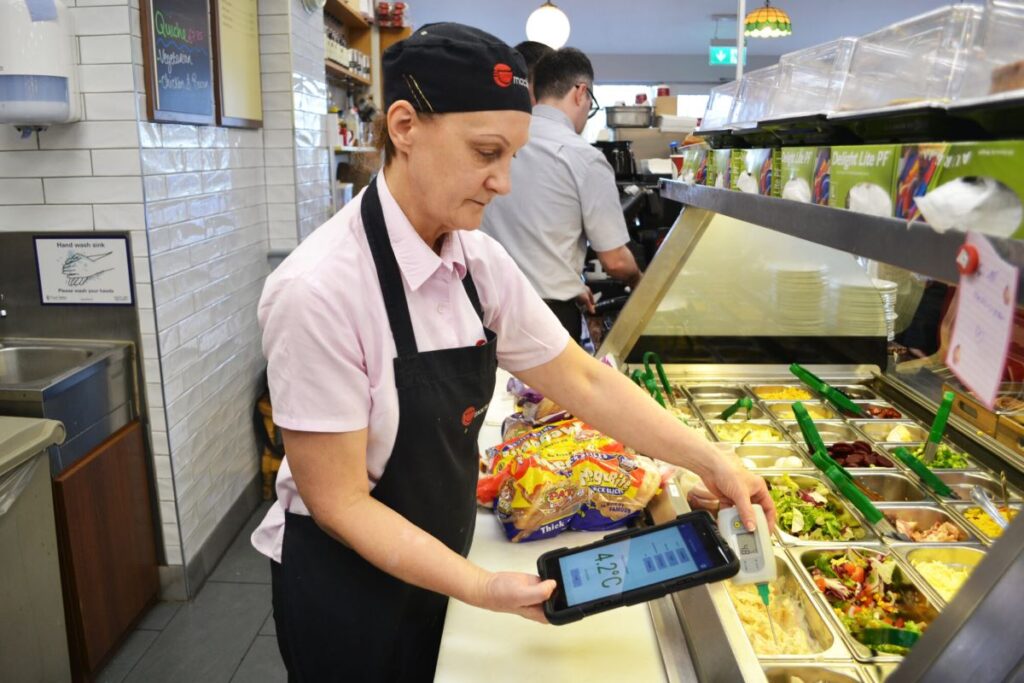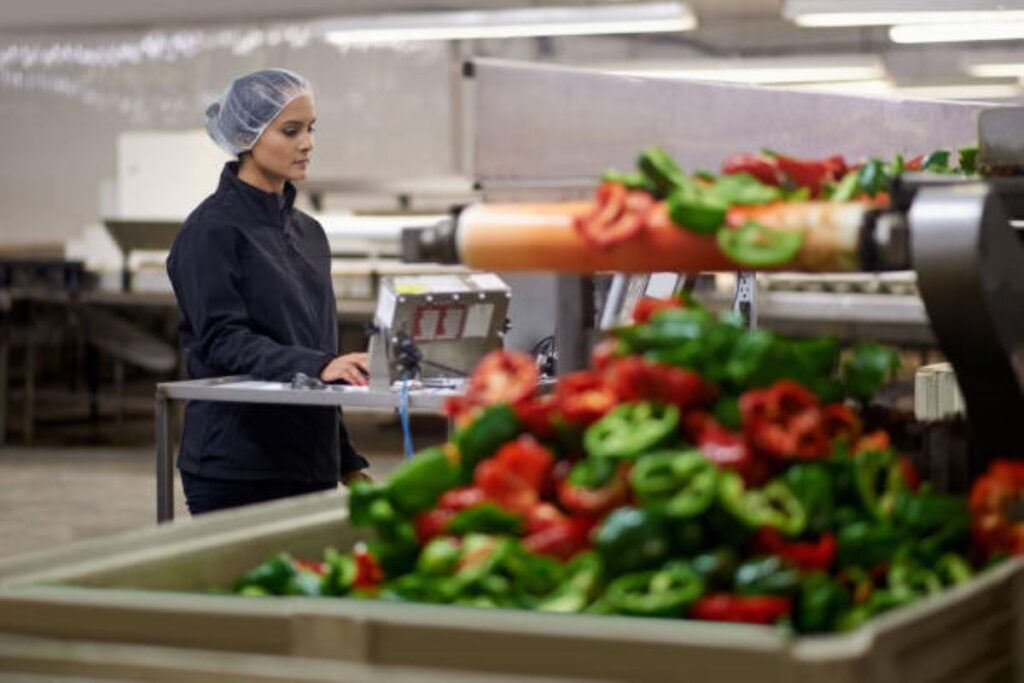The Importance of Food Safety
Food safety is a critical concern for both consumers and businesses in the food industry. Ensuring that food is stored, prepared, and served at the correct temperatures is essential to prevent foodborne illnesses, which can have serious health implications. According to the World Health Organization, an estimated 600 million people fall ill after eating contaminated food each year, highlighting the need for robust food safety measures. The repercussions of foodborne illnesses extend beyond individual health; they can lead to significant economic losses for businesses due to recalls, legal actions, and damage to reputation. Therefore, a comprehensive understanding of food safety protocols is not just beneficial but vital for the sustainability of food enterprises.
Temperature control plays a pivotal role in maintaining the safety and quality of food products. Bacteria thrive in certain temperature ranges, particularly between 5°C and 60°C, known as the “danger zone.” By monitoring and managing temperatures effectively, businesses can significantly reduce the risk of contamination and spoilage. Additionally, the implementation of advanced technologies, such as smart thermometers and temperature monitoring systems, has revolutionised the way food safety is managed. These innovations allow for real-time tracking of food temperatures, ensuring that any deviations from safe levels are promptly addressed. Furthermore, training staff on the importance of food safety and proper handling techniques fosters a culture of safety within the workplace, which is essential for maintaining high standards in food preparation and service.
What is Wireless Temperature Monitoring?
Wireless temperature monitoring refers to the use of advanced technology to continuously track and record the temperature of food storage environments without the need for physical checks. This system typically employs sensors that transmit data to a central monitoring system via Wi-Fi or Bluetooth, allowing for real-time tracking and alerts.
These systems can be installed in various locations, including refrigerators, freezers, and storage rooms. By utilising wireless technology, businesses can ensure that temperature data is collected accurately and efficiently, reducing the likelihood of human error.
Key Components of Wireless Temperature Monitoring Systems
A typical wireless temperature monitoring system consists of several key components. Firstly, temperature sensors are placed in critical areas to measure the ambient temperature. These sensors are often equipped with advanced features, such as high accuracy and rapid response times.
Secondly, a central monitoring unit collects data from the sensors and processes it for analysis. This unit can be accessed remotely via a computer or mobile device, allowing users to monitor temperature trends and receive alerts instantly.
Lastly, software applications provide users with insights into temperature data, enabling them to generate reports and track compliance with food safety regulations.
Benefits of Wireless Temperature Monitoring
Implementing a wireless temperature monitoring system offers numerous benefits that enhance food safety and operational efficiency. These advantages can be categorised into several key areas.
Real-Time Monitoring and Alerts
One of the most significant benefits of wireless temperature monitoring is the ability to receive real-time alerts. When temperatures deviate from the set parameters, users are immediately notified via email or SMS. This prompt response allows businesses to take corrective action before food safety is compromised.
For example, if a freezer malfunctions and the temperature rises above the acceptable range, the system can alert staff to investigate the issue and take necessary measures, such as relocating products or adjusting the temperature settings. This proactive approach can prevent significant financial losses and protect consumers from potential health risks.
Data Accuracy and Compliance
Manual temperature checks are often prone to human error, leading to inaccurate data and potential compliance issues. Wireless temperature monitoring systems eliminate this risk by providing precise, continuous data collection. This accuracy is crucial for businesses that must adhere to strict food safety regulations.
Moreover, these systems often come equipped with data logging capabilities, which automatically record temperature readings over time. This data can be invaluable during audits, as it provides a clear record of compliance with food safety standards. By demonstrating adherence to regulations, businesses can avoid fines and enhance their reputation among consumers.
Cost Efficiency and Resource Management
Investing in a wireless temperature monitoring system can lead to significant cost savings in the long run. By preventing spoilage and waste, businesses can protect their bottom line. For instance, a restaurant that monitors its refrigeration units can avoid costly losses associated with food spoilage due to temperature fluctuations.
Additionally, these systems can optimise resource management by providing insights into energy usage. By monitoring temperature trends, businesses can identify inefficiencies in their refrigeration systems and make adjustments to reduce energy consumption, ultimately leading to lower utility bills.

Implementing Wireless Temperature Monitoring in Your Business
For businesses looking to enhance their food safety practices, implementing a wireless temperature monitoring system is a strategic move. However, careful planning and consideration are essential to ensure a successful transition.
Assessing Your Needs
Before selecting a wireless temperature monitoring system, it is crucial to assess the specific needs of your business. Consider the types of food products you handle, the size of your storage facilities, and the regulatory requirements you must meet. This assessment will help you determine the number of sensors required and the features necessary for your operations.
Engaging with stakeholders, including staff and management, can provide valuable insights into the unique challenges faced within the business. This collaborative approach ensures that the chosen system aligns with operational goals and enhances overall efficiency.
Choosing the Right System
With a plethora of wireless temperature monitoring systems available on the market, selecting the right one can be daunting. Key factors to consider include the accuracy of the sensors, the range of wireless connectivity, ease of use, and the quality of customer support offered by the provider.
It is advisable to seek out systems that offer user-friendly interfaces and comprehensive training for staff. This will facilitate a smoother integration process and ensure that employees are confident in using the technology effectively.
Training and Implementation
Once a wireless temperature monitoring system has been selected, proper training is essential for successful implementation. Staff should be educated on how to use the system, interpret data, and respond to alerts appropriately. Regular training sessions can help reinforce these skills and keep employees informed about any updates or changes to the system.
Additionally, establishing standard operating procedures (SOPs) for temperature monitoring can help ensure consistency and accountability among staff. These SOPs should outline the steps to take in the event of a temperature breach and the protocols for regular system checks and maintenance.
Case Studies: Success Stories in Wireless Temperature Monitoring
Numerous businesses across Australia have successfully implemented wireless temperature monitoring systems, leading to improved food safety and operational efficiency. These case studies highlight the transformative impact of this technology in various sectors of the food industry.
Case Study 1: A Leading Supermarket Chain
A major supermarket chain in Australia adopted a wireless temperature monitoring system across its stores to enhance food safety and reduce waste. By implementing real-time monitoring, the chain was able to identify temperature fluctuations in its refrigeration units quickly. As a result, the supermarket reduced food spoilage by 30% within the first year of implementation.
Moreover, the supermarket chain reported improved compliance with food safety regulations, leading to enhanced consumer trust and satisfaction. The success of this initiative has encouraged the chain to explore further technological advancements in food safety.
Case Study 2: A Local Restaurant
A local restaurant faced challenges with maintaining consistent temperatures in its walk-in coolers. After installing a wireless temperature monitoring system, the restaurant was able to monitor temperatures remotely and receive alerts when issues arose. This proactive approach allowed the restaurant to address potential problems before they affected food quality.
As a result, the restaurant not only improved its food safety practices but also enhanced its reputation among customers. The owner reported a noticeable increase in customer satisfaction, attributing this success to the restaurant’s commitment to food safety.

Conclusion
Wireless temperature monitoring is a vital tool for enhancing food safety in the modern food industry. By providing real-time monitoring, accurate data collection, and proactive alerts, these systems empower businesses to maintain compliance with food safety regulations and protect consumers from health risks.
As demonstrated by successful case studies, the implementation of wireless temperature monitoring can lead to significant improvements in operational efficiency and cost savings. For businesses committed to food safety, investing in this technology is not just a choice; it is a necessity.
In an ever-evolving food landscape, embracing innovation is key to ensuring the safety and quality of food products. Wireless temperature monitoring stands as a testament to how technology can enhance food safety and ultimately contribute to a healthier society.
Related : Understanding Food Safety Compliance Management and Its Importance
